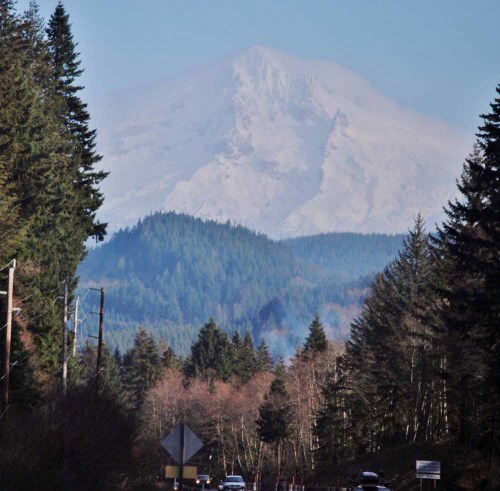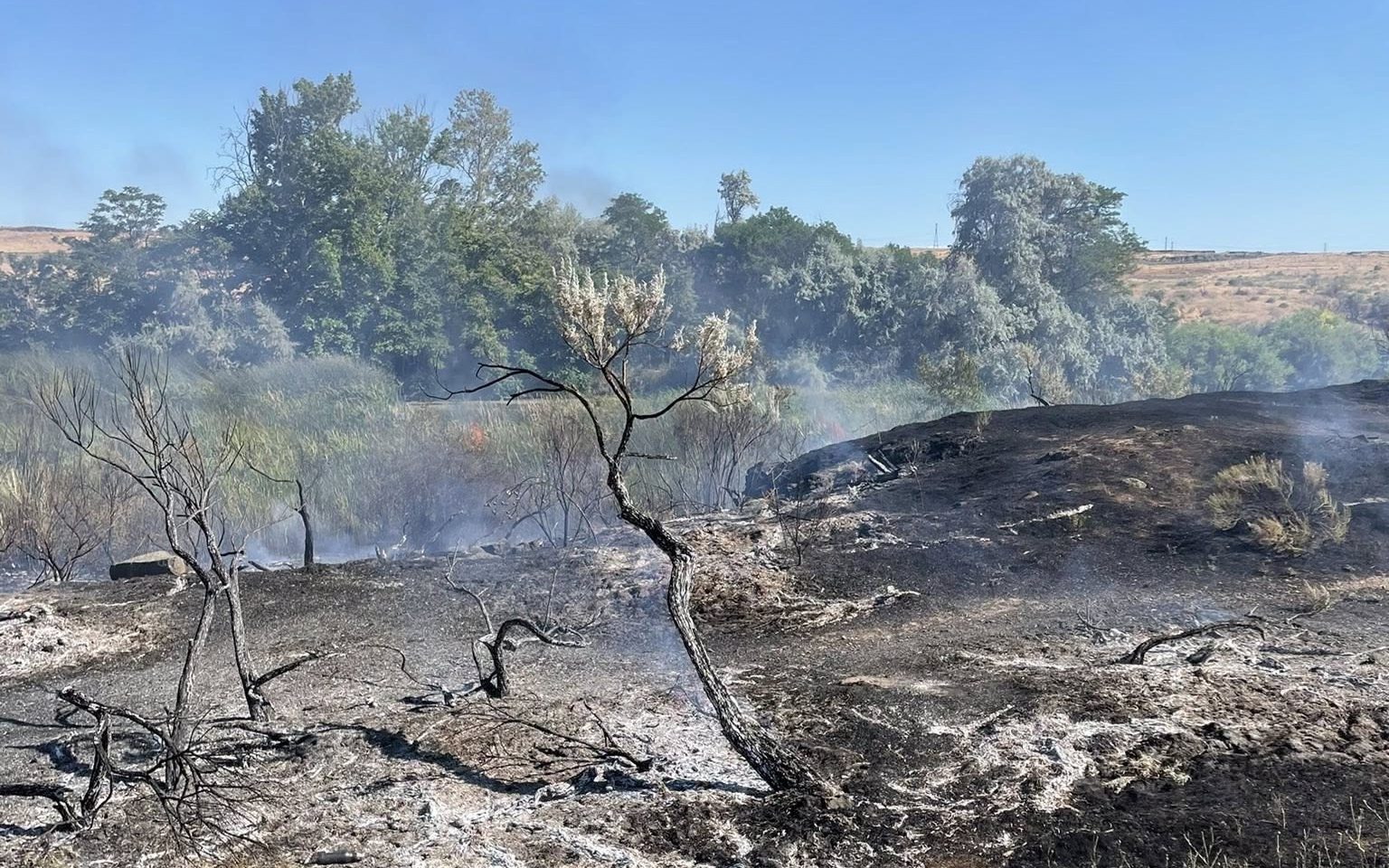Oregon tribal elders ask feds to restore sacred site destroyed by U.S. 26 expansion
Published 8:00 am Friday, November 19, 2021

- This 2014 photo shows Mount Hood looming over U.S. Highway 26 east of Sandy. The 9th U.S. Circuit Court of Appeals is deciding on a case that could restore a sacred site and burial ground near Mount Hood that was destroyed to make room for a left-turn lane on the highway.
MOUNT HOOD — The Federal Highway Administration and U.S. Bureau of Land Management should restore a sacred site and burial ground near Mount Hood that was destroyed to make room for a left-turn lane on the U.S. Highway 26, an attorney argued this week before the 9th U.S. Circuit Court of Appeals.
The agencies should replant trees and medicinal plants and remove a grass embankment that now covers an ancient burial site, said Joe Davis, an attorney representing tribal elders and two nonprofit groups.
Justice Department attorney Joan Pepin said the site already had been destroyed by the time the plaintiffs filed suit, so their arguments are moot.
“These features that they claim made their site sacred are irretrievably gone before the suit was even brought and there’s no relief that can bring it back,” Pepin said.
Pepin also said the responsibility for handling several of the plaintiff’s requests — including removing guardrails from the highway near the site and replanting trees — would fall upon the Oregon Department of Transportation, which operates the highway, not the federal government.
Attorneys for both sides appeared Tuesday, Nov. 16, in a virtual hearing before three 9th Circuit judges in San Francisco.
Elders of the Confederated Tribes of Grande Ronde and the Klickitat Tribe of the Yakama Nation, along with nonprofits Cascade Geographic Society and Mount Hood Sacred Lands Preservation Alliance, sued the federal government in 2008 over the mile-long construction project west of Government Camp.
The highway expansion began that same year after community outcry over increasing car accidents, including one fatality, due to a lack of a left-turn lane. It was completed by July 2009.
The plaintiffs contend the highway expansion felled a cluster of old-growth Douglas Fir trees and turned part of the sacred site into a grass embankment. The site is traditionally known as Ana Kwna Nchi nchi Patat, meaning “The Place of Big Big Trees.” It was where Native Americans camped while on the way to trade at Celilo Falls or picked camas in the Willamette Valley, court records show. Native Americans also used the site as a burial ground and a place for vision quests, prayer, tobacco offerings, medicine gathering, fishing and hunting.
Tribal elders contended the government had violated a section of the Religious Freedom Restoration Act by destroying the site.
But U.S. Magistrate Judge Youlee Yim You dismissed the lawsuit in March 2018, saying the elders did not show that their right to exercise their religion had been “substantially burdened.” You also said the site is not the only area where the plaintiffs can practice their religion, as the entire Mount Hood and Willamette Valley is sacred to them, and that they are still able to access the site through the East Wemme Trail Road.
Tribal elder Carol Logan of the Confederated Tribes of Grande Ronde, Wilbur Slockish, hereditary chief of the Klickitat Tribe of the Yakama Nation, and the two nonprofits appealed in May.
“We have been waiting for over a decade for this injustice to be set right,” Logan said in a statement Nov. 17. “It is past time for the court to recognize that without our sacred land, our religious traditions will be lost.”
Davis said he expects the court to return a decision by the spring. He said the impacts of this decision would have consequences for people of all religious faiths.
“It would mean that the federal government has a blank check to destroy sacred sites on its property and that it can’t be held accountable for it, and that would be profound injustice,” he said. “That would also be thoroughly inconsistent with our nation’s protections for religious freedom.”






